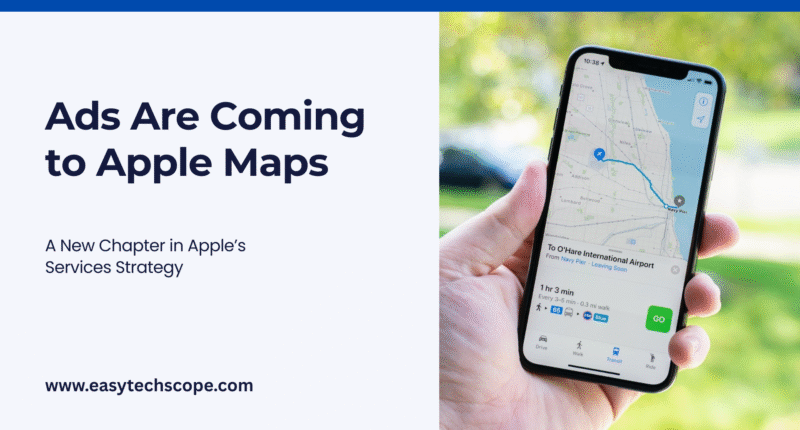Apple’s Next Big Move: Turning Maps into a Revenue Engine
Apple has long prided itself on building premium products that prioritize user experience and privacy over ad-driven business models. But now, it seems the tech giant is ready to open a new chapter in its services strategy — by introducing advertising to Apple Maps as early as next year.
According to reports, Apple is preparing to integrate location-based ads into Maps, allowing businesses to promote their stores, restaurants, and services directly within the navigation experience. This shift marks a significant strategic expansion for Apple’s rapidly growing Services division, which already includes App Store ads, Apple TV+, Apple Music, and iCloud+.
The move may seem surprising for a company known for its tight stance on privacy, but it reflects a broader trend: Apple’s ambition to diversify revenue beyond hardware sales. As iPhone demand stabilizes, services like Maps could become the next major growth engine.
How Apple Plans to Introduce Ads in Maps
The new ad system, expected to roll out in 2026, will reportedly allow businesses to pay for placement within search results or map pins, similar to Google Maps’ Local Ads. For example, if a user searches for “coffee near me,” promoted listings could appear alongside organic results, clearly labeled as “sponsored.”
Apple’s strategy will likely focus on non-intrusive and privacy-friendly ads, maintaining the company’s long-standing reputation for user trust. Rather than using detailed personal data, Apple may rely on contextual targeting — meaning ads are based on the user’s current location, map activity, or search intent, without collecting or selling individual user data.
Industry analysts suggest this approach could make Apple Maps advertising particularly attractive to small and medium-sized businesses, who rely heavily on local visibility but prefer platforms with strong privacy safeguards.
Why Apple Is Expanding Its Services Ecosystem
Apple’s decision to monetize Maps aligns with CEO Tim Cook’s broader vision to turn services into a multi-billion-dollar powerhouse. The company’s Services revenue — which includes the App Store, Apple Pay, and subscriptions — has already surpassed $100 billion annually.
However, to sustain growth, Apple needs to find new digital surfaces for advertising beyond the App Store. Maps offers a perfect opportunity: it has hundreds of millions of active users worldwide, most of whom use it for discovering nearby locations or planning routes.
By adding ads to Maps, Apple can provide more value to businesses while deepening user engagement across its ecosystem — especially as augmented reality (AR) navigation and Apple Vision Pro integration become more common.
Key Benefits of Apple’s Ad Expansion
-
Revenue diversification beyond iPhone and Mac sales.
-
Better support for local businesses through discoverability tools.
-
Enhanced ecosystem integration with Apple Pay, Wallet, and Siri.
-
Privacy-preserving ad delivery, reinforcing Apple’s brand trust.
Privacy Concerns and User Reactions
Despite Apple’s reputation for protecting user privacy, the announcement has raised mixed reactions. Some users worry that the company might gradually erode its “privacy-first” image by expanding its ad footprint. Others argue that contextual advertising, if done transparently, could actually improve user experience — helping users discover new places more easily.
Apple has reassured users that data collection will remain minimal, and no personal identifiers will be shared with advertisers. The ads will be displayed in a way that blends naturally with the app interface, avoiding the clutter and intrusiveness common in other platforms.
Still, experts believe Apple must tread carefully. Any misstep in how it implements or communicates its ad strategy could risk undermining years of consumer trust — something Apple has fiercely guarded since the launch of its App Tracking Transparency (ATT) policy in 2021.
A Glimpse Into the Future of Apple Maps
The addition of ads may be just the beginning of a larger transformation. Apple Maps could evolve into a comprehensive commercial hub, integrating services like in-app reservations, payments, and loyalty programs directly tied to businesses.
As Apple continues to merge AI, AR, and geospatial data, users might soon experience personalized and immersive navigation experiences, where ads are less about interruption and more about useful discovery.
In essence, Apple’s venture into Maps advertising isn’t just about revenue — it’s about shaping the future of digital exploration, where location-based experiences become more intelligent, relevant, and business-friendly.









